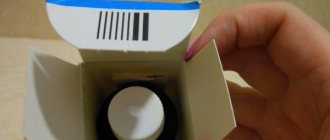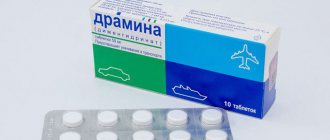Release form and composition
Cytotect is available in the form of a solution for intravenous administration of 50 U/ml. A slightly opalescent or transparent light yellow or colorless liquid is poured into 10 or 20 ml ampoules or 50 ml vials. The drug is packaged in cardboard packs (1 ampoule or 1 bottle per pack).
The composition of 1 ml of solution includes:
- active ingredient: human plasma proteins – 100 mg, including immunoglobulin – at least 95%. The content of antibodies against cytomegalovirus is at least 50 U;
- excipients: sodium chloride, water for injection.
Pharmacological action of Cytotect
In accordance with the instructions for Cytotect, the active ingredients of the product are human plasma proteins. The auxiliary substances included in the solution are sodium chloride and water for injection.
Cytotect is an immunoglobulin preparation, which is made on the basis of donor plasma with a high titer of antibodies against the causative agent of human cytomegalovirus infection.
The medicine has a pronounced immunomodulatory effect. The distribution of IgG immunoglobulin subclasses corresponds to the distribution in the plasma of donors who do not have health problems.
When administered intravenously, human immunoglobulin against cytomegalovirus infection has high bioavailability. The substance is very quickly distributed between the extravascular fluid and plasma, and after 3-5 days an equilibrium occurs between the extravascular and intravascular spaces. The period of complete elimination of the drug from the body varies within different limits in different patients. IgG complexes and immunoglobulin G are utilized by cells of the reticuloendothelial system.
Indications for use
The drug is used to treat cytomegalovirus infection in the following categories:
- patients with weakened immune systems (in particular, premature babies, newborns);
- patients with immunosuppressed medications or immunodeficiency caused by other causes (for example, AIDS).
Cytotect is used as a prophylactic agent in the following cases:
- prevention of cytomegalovirus infection during drug suppression of the immune system (for example, after organ transplantation);
- prevention of disease manifestation after infection with CMV (cytomegalovirus).
Instructions for use of the drug Cytotect bottle 10ml 1000E
Composition Pharmacological action Indications for use Contraindications Dosage and method of administration Overdose Side effects Storage conditions For what diseases is it used?
Compound
| Solution for injection 10% | 1 ml |
| human plasma proteins | 100 mg |
| (of which IG ≥ 95%, including antibodies against CMV 50 units of the comparative drug from the Paul Ehrlich Institute) |
pharmachologic effect
Pharmacological action: immunomodulatory.
Increases the level of antibodies against human CMV in the body.
Indications for use
Prevention of cytomegalovirus infection in patients with a drug-suppressed immune system, in particular in patients after organ transplantation, to prevent the manifestation of the disease after infection with cytomegalovirus (CMV).
Treatment of cytomegalovirus infection in immunocompromised patients, such as premature infants, newborns, and patients with drug-suppressed immunity or immunodeficiency due to other causes (eg, AIDS)
Contraindications
Hypersensitivity to human immunoglobulin, especially in rare cases of deficiency of immunoglobulin class A (IgA) in the blood and the presence of antibodies against IgA.
Dosage and method of administration
Prevention of cytomegalovirus infection in immunosuppressed patients
If nothing else is prescribed, then, as a rule, 50 U per kg of body weight should be administered as a single dose. In CMV-seronegative organ transplant patients, administration should begin on the day of transplantation, and for bone marrow transplantation, on the day prior to transplantation. In CMV-seropositive patients, prophylaxis should begin 10 days before transplantation. In total, the patient should receive at least 6 single doses with an interval of 2 to 3 weeks.
Therapy for cytomegalovirus infection
Minimum 100 U per kg body weight as a single dose every 48 hours until clinical symptoms disappear.
Method of administration
The solution is intended for intravenous administration.
During infusion, the rate of administration should not exceed 20 drops per minute (1 ml/min). Before administration, Cytotect must be visually checked for the presence of suspended particles and staining. A solution that is opaque or has sediment should not be used.
Before administration, Cytotect must be warmed to room temperature or body temperature.
Overdose
Overdose is possible in overweight patients, elderly patients, and people with limited kidney function (including diabetic patients at risk of kidney failure). Especially in elderly patients and patients with limited renal function, an overdose can lead to hypervolemia and blood hyperviscosity. In patients with signs of cerebral or cardiac ischemia, an increase in blood viscosity due to the administration of immunoglobulins can lead to complications. In these groups of patients, the daily dosage should not exceed 8 ml (0.4 g)/kg body weight. After administration of immunoglobulin, creatinine levels (an indicator of kidney function) must be monitored daily for 3 days.
Side effect
Possible side effects include chills, headache, fever, nausea, vomiting, allergic reactions, joint pain and mild back pain.
In isolated cases, primarily with high dosages of intravenous immunoglobulins, cases of the appearance of signs of aseptic meningitis, such as severe headache, nausea, vomiting, fever, neck stiffness, photosensitivity and impaired consciousness have been described). These symptoms may appear within a few hours to several days after the infusion and disappear without a trace after the end of therapy. Particular caution should be exercised in patients with a known migraine tendency.
In isolated cases, primarily in patients with existing renal impairment, further worsening of renal failure may occur with an increase in serum creatinine, up to anuria. The appearance of these symptoms is sometimes observed with the administration of large volumes of immunoglobulins; they disappear without a trace after cessation of therapy. In rare cases, as a result of the administration of immunoglobulin, a decrease in blood pressure and, in isolated cases, anaphylactic shock are possible, even if the patient did not show excessive sensitivity during the previous administration of the drug.
The patient must inform the doctor about all manifestations of side effects. When using drugs from human blood or plasma due to the transmission of infectious disease agents, infection by the latter cannot be completely excluded. This also applies to pathogens of a still unknown nature. To reduce the risk of pathogen transmission, donors are screened using strict criteria, donated plasma is tested and selected, and the plasma pool is monitored. The manufacturing process includes steps to remove and/or inactivate pathogens.
If intolerance reactions to the drug occur, it is necessary to either reduce the rate of administration or interrupt it until the symptoms disappear. If severe side effects are observed after stopping the infusion, appropriate treatment should be initiated.
In case of anaphylactic reactions or shock, treatment should be carried out in accordance with the rules for shock therapy.
Storage conditions
Cytotect should be stored at a temperature of 2 to 8°C, protected from light. The drug must not be frozen!
After the expiration date indicated on the packaging box and label, the medicinal product cannot be used.
The contents of opened ampoules or vials should be used immediately. Due to the risk of bacterial contamination, unused solution should be discarded.
SELF-MEDICATION CAN BE DANGEROUS TO YOUR HEALTH. ALWAYS CONSULT WITH YOUR DOCTOR.
For what diseases is it used?
- Cytomegalovirus infection
Contraindications
- hypersensitivity to human immunoglobulin [especially rare cases of deficiency of immunoglobulin class A (IgA) in the blood and the presence of antibodies against IgA];
- hypersensitivity to any components of Cytotect.
The drug must be prescribed and administered with caution in the following cases:
- high blood pressure;
- overweight;
- diabetes;
- elderly age;
- vascular disease or history of thrombosis;
- chronic diseases that increase blood viscosity;
- hereditary or acquired thrombophilias;
- severe hypovolemia;
- long-term immobilization of the patient.
Cytotect solution for intravenous administration, ampoule 10 ml
Additional Information
When using drugs from human blood or plasma due to the transmission of infectious disease agents, infection by the latter cannot be completely excluded. This also applies to pathogens of a still unknown nature. To reduce the risk of pathogen transmission, donors are screened using strict criteria, donated plasma is tested and selected, and the plasma pool is monitored.
The production process includes stages of elimination and/or inactivation of pathogens.
To produce Cytotect, only plasma from healthy donors is used, in which antibodies to HIV-1/HIV-2, hepatitis C virus and hepatitis B virus surface antigen were not detected, and the activity of liver enzymes (transaminase) does not exceed the normal limit value. In addition to individual testing of plasma from individual donors, first minipools are monitored (PCR testing for HIV, hepatitis A, B and C viruses, parvovirus B19), and then the production pool of plasma processed at Cytotect (repeated testing for antibodies to HIV-1/HIV -2, hepatitis B and C viruses, as well as by PCR for HIV, hepatitis B and C viruses). A pool of plasma is used in production only if the test results are negative.
Cytotect is prepared by cold ethanol fractionation. To inactivate and eliminate possible contaminating viruses, treatment with B-propiolactone and filtration are carried out.
Precautions for use
Certain severe side effects may be due to the high rate of drug administration. It is necessary to strictly adhere to the rate of administration recommended in the section "Method of administration and dosage", since the frequency of possible occurrence of symptoms of side effects increases with increasing infusion rate.
Certain side effects may occur most often:
- at a high rate of administration,
- in patients with complete or partial immunodeficiency, both with and without IgA deficiency,
- in patients receiving human immunoglobulin for the first time, or in rare cases when switching to another immunoglobulin preparation, or if treatment with immunoglobulins has been carried out for a long time.
True hypersensitivity reactions are extremely rare, in cases in which there is no immunoglobulin A (IgA) in the blood and antibodies to IgA are formed.
In rare cases, human immunoglobulin can cause an anaphylactic reaction with a decrease in blood pressure, even if the patient did not show excessive sensitivity with the previous administration of the drug.
In most cases, possible complications can be avoided if:
— make sure that the patient does not have allergic reactions to slow administration of immunoglobulin (0.08 ml/kg/h);
- carefully monitor the patient throughout the entire administration of the drug and monitor for signs of undesirable effects. Particular care should be taken during the first infusion and for the first hour after its completion for patients who have never previously received human immunoglobulins, or who have received other immunoglobulins, or who have been administered immunoglobulins for a very long time. All other patients should be observed for at least 20 minutes after administration.
There is a suspected relationship between the administration of intravenous immunoglobulins and thromboembolic events such as myocardial infarction, stroke, pulmonary embolism and deep vein thrombosis. It is assumed that in patients at risk, the administration of a high dose of immunoglobulin leads to a relative increase in blood viscosity. It is recommended to prescribe and administer immunoglobulins with caution to patients who are overweight, elderly, with high blood pressure, diabetes mellitus, vascular disease or a history of thrombosis, hereditary or acquired thrombophilias, patients who have been immobile for a long time, with severe hypovolemia, as well as patients with chronic diseases in which blood viscosity increases.
With the administration of intravenous immunoglobulins, isolated cases of acute renal failure have been described in patients with additional risk factors: impaired renal function, diabetes mellitus, reduced circulating blood volume, excess body weight, taking medications that have a nephrotoxic effect, and age over 65 years.
Most often, impaired renal function and acute renal failure are associated with the use of drugs containing sucrose as a stabilizer. Therefore, patients with any risk factor are recommended to use immunoglobulins that do not contain sucrose, for example, Cytotect. In patients at risk of developing acute renal failure or thromboembolism, the immunoglobulin drug should be administered at a minimal rate.
When treated with Cytotect, all patients require:
- sufficient fluid intake before starting the drug infusion;
- control over diuresis;
— control of serum creatinine levels;
- exclude simultaneous use of diuretics.
Impact on the ability to drive vehicles and operate machinery
There is no indication that immunoglobulins may affect the ability to drive a car or operate machinery.
Laboratory research
After the administration of immunoglobulin, a temporary increase in the titer of various passively administered antibodies is possible, which can lead to false-positive test results in serological studies. Passively administered antibodies against red blood cell antigens (eg A, B, D) can affect selected serological parameters such as red blood cell alloantibodies (eg Coombs test), reticulocyte count and haptoglobin.
Directions for use and dosage
Before administering the drug, it is necessary to visually check the contents of the bottle. The solution should be slightly opalescent or completely transparent. A solution that contains sediment or is opaque is unsuitable for use. Before administration, Cytotect must be warmed to body temperature or room temperature.
When performing an infusion, the initial rate should be 0.08 ml per 1 kg of body weight/hour. 10 minutes after the start of the infusion, if the drug is well tolerated, the rate can be increased to 0.8 ml per 1 kg of body weight/hour, maintaining this indicator until the end of the administration.
Cytotect can only be mixed with 0.9% sodium chloride solution. It is prohibited to add other drugs to the solution - changing the pH value or electrolyte concentration can lead to denaturation or precipitation of the protein.
When opening the bottle, its contents must be used immediately. Due to possible bacterial contamination, storing unused drug is prohibited.
Recommended doses of the drug:
- prevention of cytomegalovirus infection in patients with suppressed immunity: in the absence of other prescriptions, a single dose of 1 ml per 1 kg of body weight is used. For organ transplantation in CMV-seronegative patients, Cytotect administration should begin on the day of transplantation; for bone marrow transplantation, on the day preceding the transplantation. In CMV-seropositive patients, prophylaxis should begin 10 days before transplantation. Course duration – at least 6 single doses with an interval of 2–3 weeks;
- therapy for cytomegalovirus infection: a single dose of 2 ml per 1 kg of body weight is prescribed. The drug must be administered every 48 hours until clinical symptoms disappear.
Cytotect: description, instructions, price
P N013228/01-2001.INN Human anticytomegalovirus immunoglobulin Trade name Cytotect Reg Number P N013228/01-2001 Registration date 12/15/2008 Cancellation date Manufacturer Biotest Pharma GmbH - Germany
Packaging: No. Packaging ND EAN 1 solution for intravenous administration 50 U/ml 10 ml, ampoules ND 42-12922-01
2 solution for intravenous administration 50 U/ml 10 ml, ampoules
3 solution for intravenous administration 50 U/ml 20 ml, ampoules
4 solution for intravenous administration 50 U/ml 20 ml, ampoules ND 42-12922-01
5 solution for intravenous administration 50 U/ml 50 ml, bottles ND 42-12922-01
6 solution for intravenous administration 50 U/ml 50 ml, bottles
International name: Human anticytomegalovirus immunoglobulin Dosage form: solution for intravenous administration
Characteristics: 1 ml of solution for infusion contains 100 mg of human plasma proteins (Ig - at least 95%, of which antibodies against CMV - at least 50 IU). Dr. components: IgA (5 mg), NaCl (155 µmol), water for injection.
Pharmacological action: Human Ig contains specific antibodies (primarily IgG) to CMV.
Indications: Prevention and treatment of CMV infection in patients with immunodeficiency (including newborns, as well as patients with drug-induced immunosuppression or immunodeficiency caused by other causes, such as HIV).
Contraindications: Hypersensitivity to human Ig, in rare cases with IgA deficiency and the presence of antibodies against IgA.C with caution. Pregnancy, lactation, migraine, chronic renal failure.
Dosage regimen: IV; before administration, the solution should be warmed to room temperature or body temperature. Only a clear solution can be administered. The rate of administration should not exceed 20 drops/min (1 ml/min). The size of a single dose is 50 IU/kg. For transplantation, administration (1 ml/kg) should begin on the day of transplantation, and for bone marrow transplantation, on the day preceding transplantation. Prophylactic administration begins 10 days before transplantation, especially in CMV-seropositive patients, and the patient should receive at least 6 doses at an interval of 2-3 weeks. Treatment of infection: at least 2 ml/kg every 2 days until clinical symptoms disappear.
Side effects: Chills, headache, hyperthermia, nausea, vomiting, allergic reactions, joint pain, back pain; rarely - increased blood pressure, in isolated cases - anaphylactic shock. At high doses - signs of aseptic meningitis (severe headache, nausea, vomiting, fever, stiff neck, photosensitivity, confusion); worsening of existing renal failure, up to anuria), hypercreatininemia (in patients with chronic renal failure). Overdose. Symptoms (possible in overweight, elderly patients, with impaired renal function, including patients with diabetic nephropathy): hypervolemia, hypercoagulation.
Special instructions: The patient must be under medical supervision during the entire period of infusion and for at least 20 minutes after its completion. A temporary increase in the content of injected antibodies in the patient’s blood after the administration of Ig can cause false-positive results of serological tests (Coombs test, CMV serology, etc.). Passes into breast milk and may contribute to the transfer of protective antibodies to the newborn. The effectiveness and safety of the drug during pregnancy and lactation have not been studied. Long-term experience with the use of Ig indicates the absence of harmful effects on the course of pregnancy, as well as on the fetus and newborn. Signs of aseptic meningitis can appear both in the first hours after administration of the drug and after a few days; they disappear without a trace after cessation of therapy. The recommended rate of administration of the drug should be strictly observed, since it determines the likelihood of developing a number of side effects. In patients with signs of cerebral or coronary ischemia, hypercoagulation can lead to vascular complications, so in this group of patients the dosage should not exceed 8 ml (0.4 g)/kg. After Ig administration, creatinine levels should be monitored daily for 3 days. For production, plasma from healthy donors is used, in which antibodies to HIV types 1 and 2, hepatitis C virus were not detected, and the surface antigen of the hepatitis B virus and transaminase activity do not exceed normal values. Additionally, the pool of processed plasma is monitored for HIV and antibodies to the hepatitis C virus and the surface antigen of the hepatitis B virus. It is produced after fractionation with ethanol in the cold. To inactivate and remove viruses, beta-propiolactone treatment and filtration are carried out.
Interaction: Reduces the activity of attenuated live vaccines against measles, rubella, mumps, chickenpox (when administered in the first 2 weeks after vaccination against measles, mumps and rubella, vaccinations with these vaccines should be repeated no earlier than 3 months later). Can only be mixed with 0.9% NaCl solution. Dr. Drugs cannot be added to the solution, because changes in electrolyte concentration or pH may cause denaturation or precipitation b
6 solution for intravenous administration 50 U/ml 50 ml, bottles
Analogs
An analogue of Cytotect is NeoCytotect.
In the production of Cytotect, plasma from healthy donors is used, which does not contain antibodies to HIV-1/HIV-2 and the hepatitis C virus, as well as the surface antigen of the hepatitis B virus. In addition, the activity of liver enzymes is monitored. In addition to individual testing of plasma from individual donors, control is carried out on mini-pools (using the PCR testing method for HIV, parvovirus B19 and hepatitis A, B, C viruses) and the production pool of plasma processed at Cytotect. A pool of plasma that has shown negative test results is used for production.
Drug interactions
Drug, group of drugs
Possible interaction result with misoprostol
Significant reduction in bioavailability of misoprostol
Magnesium-containing antacids, aluminum-containing antacids
New or worsening diarrhea
Magnesium-containing antacids, aluminum-containing antacids
CYTOTEKT: instructions for use and reviews
The distribution of IgG immunoglobulin subclasses corresponds to the distribution in the plasma of healthy donors.
Interaction with other drugs
Thiocetam should not be administered with medications that have an acidic pH.
Due to the presence of piracetam in the composition, the following types of interactions are possible:
Thyroid
hormones.
When used together with thyroid hormones (T3+T4), increased irritability, disorientation and sleep disturbance are possible.
Acenocoumarol.
In patients with severe recurrent thrombosis, the use of piracetam in high doses (9.6 g / day) did not affect the dosage of acenocoumarol to achieve a prothrombin time (INR) value of 2.5-3.5, but with its simultaneous use there was a significant decrease in the level platelet aggregation, fibrinogen level, von Willebrand factors (coagulation activity (VIII: C); co-factor ristocetin (VIII: vW: Rco) and plasma protein (VIII: vW: Ag)), blood and plasma viscosity.
Pharmacokinetic interactions.
The likelihood of changes in the pharmacokinetics of piracetam under the influence of other drugs is low, since 90% of the drug is excreted unchanged in the urine.
In in vitro
piracetam does not inhibit cytochrome P450 isoforms CYP1A2, 2B6, 2C8, 2C9, 2C19, 2D6,2E1 and 4A9/11 at concentrations of 142, 426, 1422 μg/ml.
At a concentration of 1422 µg/ml, minimal inhibition of CYP2A6 (21%) and 3A4/5 (11%) was observed. However, normal values of the inhibition constant (Ki) can probably be achieved at higher concentrations. Thus, metabolic interaction of piracetam with other drugs is unlikely.
Antiepileptic drugs.
Piracetam 20 g/day for 4 weeks in patients with epilepsy receiving stable doses of antiepileptic drugs did not change the maximum serum concentration and AUC (area under the curve) of antiepileptic drugs (carbamazepine, phenytoin, phenobarbital and valproate).
Concomitant use with enalapril and captopril increases the risk of adverse reactions from the cardiovascular system.
Alcohol.
Co-administration with alcohol did not affect the serum concentration of piracetam, and the concentration of ethanol in the blood serum did not change with the use of 1.6 g of piracetam.
Piracetam 20 g/day for 4 weeks in patients with epilepsy receiving stable doses of antiepileptic drugs did not change the maximum serum concentration and AUC (area under the curve) of antiepileptic drugs (carbamazepine, phenytoin, phenobarbital and valproate).
Conditions for dispensing from pharmacies
Do not use after the expiration date.
Indications for use
- treatment of CMV infection in patients with weakened immune systems (newborns, premature infants, patients with suppressed immunity due to drugs, people with immunodeficiency due to other reasons, etc.);
- prevention of disease manifestation after CMV infection;
- prevention of CMV infection in patients with an immune system suppressed by drugs, in particular after organ transplantation.
Cytotect is administered intravenously.
Recipe
Before administering Cytotect, you must visually check the contents of the bottle. The solution should be clear or slightly opalescent. A solution that is opaque or contains sediment should not be used. Before administration, the drug should be warmed to room temperature or body temperature. Cytotect is intended for intravenous administration. The initial infusion rate should be 0.08 ml/kg body weight/hour. If the drug is well tolerated, 10 minutes after the start of administration, the rate can be gradually increased to 0.8 ml/kg body weight/hour and maintained until the end of administration. Note: Cytotect may only be mixed with 0.9% sodium chloride solution. It is prohibited to add other drugs to the Cytotect solution, since changes in the electrolyte concentration or pH value can cause denaturation or precipitation of the protein. An opened bottle should be used immediately. Due to the risk of bacterial contamination, unused drug should not be stored. Recommended dosages of the drug: When preventing cytomegalovirus infection in patients with suppressed immunity, the drug is administered, if nothing else is prescribed, in a single dose of 1 ml (50 U) per kg of body weight. In CMV-seronegative organ transplant patients, administration should begin on the day of transplantation, and for bone marrow transplantation, on the day prior to transplantation. In CMV-seropositive patients, prophylaxis should begin 10 days before transplantation. The course is at least 6 single doses with an interval of 2-3 weeks. When treating cytomegalovirus infection, a single dose is 2 ml (100 U) per kg of body weight. The drug is administered every 48 hours until clinical symptoms disappear.
Instructions for use Leukeran
Aspen Pharma Trading Limited (Germany) Drug: Alkeran
Pharmacological properties
Leukeran has antitumor and cytostatic effects.
Leukeran is an antitumor drug; bifunctional alkylating compound.
Description
Antitumor bifunctional alkylating agent, a derivative of aromatic nitrogen mustard. Alkylation of cells occurs through the formation of a highly reactive ethylenemonium radical between the 2 strands of the DNA helix, followed by interference with replication. In therapeutic doses, it suppresses the synthesis of lymphocytes, while having a less pronounced effect on neutrophils, platelets, and erythrocytes. Can cause irreversible myelosuppression.
Clinical effects usually appear within 3-4
Excipients: anhydrous lactose, microcrystalline cellulose, anhydrous colloidal silicon, stearic acid.
How to use: dosage and course of treatment
Lymphogranulomatosis: orally, 0.2 mg/kg/day, for 4-8 weeks.
Malignant lymphoma: initial dose – 0.1-0.2 mg/kg/day; Maintenance therapy is carried out with a lower daily dose and intermittent courses of treatment.
Chronic lymphocytic leukemia: initial dose – 0.15 mg/kg/day until the number of leukocytes drops to 10 thousand/µl; treatment is repeated 4 weeks after the end of the first course at a dose of 0.1 mg/kg/day.
Waldenström's macroglobulinemia: initial dose - 6-12 mg/day until leukopenia appears, then treatment continues indefinitely with doses of 2-8 mg/day.
Ovarian cancer: initial dose – 0.2 mg/kg/day for 4-6 weeks, maintenance dose – 0.2 mg/kg/day, prescribed to maintain the number of leukocytes at least 4 thousand/μl. Courses of maintenance therapy continue for 2-4 weeks with breaks of 2-6 weeks between each course.
Breast cancer: 0.2 mg/kg/day for 4 weeks, in monotherapy and in combination with prednisone - in doses of 14-20 mg/day, regardless of body weight, for 4-6 weeks; provided there is no serious suppression of hematopoiesis - in combination with methotrexate, 5-fluorouracil and prednisolone at a dosage of 5-7.5 mg/sq.m/day.
In case of lymphocytic infiltration of the bone marrow or in the case of bone marrow hypoplasia, the daily dose should not exceed 0.1 mg/kg.
As an immunosuppressant: orally, 0.1-0.2 mg/kg/day once for 8-12 weeks. The maximum recommended total dose is 8.2-14 mg/kg, the maximum duration of treatment is 6-12 weeks.
From the digestive system: nausea, vomiting, diarrhea, ulceration of the oral mucosa, hepatotoxic effect of toxic-allergic origin (hepatonecrosis or cirrhosis, cholestasis, jaundice).
Pharmacotherapeutic group:
ATX code: L01AA02
Pharmacological properties Pharmacodynamics Chlorambucil is an aromatic derivative of nitrogen mustard and acts as a bifunctional alkylating drug. Alkylation occurs through the formation of highly active ethylenimonium radicals. It is likely that cross-linking of ethylenemonium radicals with the DNA helix occurs and subsequent disruption of the DNA replication process. Pharmacokinetics The drug is well absorbed from the gastrointestinal tract. Maximum plasma concentrations (492 + 160 ng/ml) are achieved 0.25 -2 hours after administration. The half-life averages 1.3 + 0.5 hours. Communication with plasma proteins is 99%. After oral administration of 14C-labeled chlorambucil, maximum plasma radioactivity is observed after 40–70 minutes. Chlorambucil is eliminated from the blood plasma after an average of 1.5 hours. It is quickly and completely metabolized in the liver (metabolism is associated with S-oxidation of the butyric acid side chain) to the pharmacologically active metabolite of phenylacetic mustard (bis-2-chloroethyl-2(4-aminophenyl) -acetylic acid). Excreted by the kidneys – 1560%. The half-life averages 1.8 ± 0.4 hours. The area under the pharmacokinetic curve of bis-2-chloroethyl-2(4-aminophenyl)-acetylic acid is approximately 1.33 times greater than the area under the pharmacokinetic curve of chlorambucil, which confirms the alkylating activity of the metabolite. Does not penetrate the blood-brain barrier. Passes through the placental barrier.
Indications for use
- Lymphogranulomatosis (Hodgkin's disease)
- malignant lymphomas (including lymphosarcoma)
- chronic lymphocytic leukemia
- Waldenström's macroglobulinemia
Contraindications Hypersensitivity to any component of this drug; pregnancy and lactation period.
With caution (it is necessary to compare the risk and benefit) - suppression of bone marrow function (severe leukopenia, thrombocytopenia and anemia); chicken pox (current or recent), herpes zoster, acute infectious diseases of a viral, fungal and bacterial nature, bone marrow infiltration by tumor cells, gout (history), urate nephrourolithiasis, head trauma (history), epilepsy (history ), severe liver and kidney diseases.
Method of administration and dosage Leukeran is usually one of the components of combination therapy, and therefore, when choosing doses and administration of the drug, you should refer to special literature. Leukeran is taken orally. Tablets should not be divided into parts. Hodgkin's disease In the form of monotherapy, Leukeran is usually used at a dose of 0.2 mg/kg body weight per day for 4-8 weeks. Non-Hodgkin's lymphomas As monotherapy, Leukeran is usually used initially at a dose of 0.1 - 0.2 mg/kg body weight per day for 4-8 weeks; then maintenance therapy is carried out either in a smaller daily dose or in intermittent courses. Chronic lymphocytic leukemia The initial dose of Leukeran is 0.15 mg/kg body weight per day until the total number of blood leukocytes drops to 10,000/μl. 4 weeks after the end of the first course of therapy, treatment can be resumed at a maintenance dose of 0.1 mg/kg body weight per day. Waldenström's macroglobulinemia Leukeran is the drug of choice. The initial dose is 6-12 mg/day daily, and after the development of leukopenia it is recommended to switch to maintenance therapy at a dose of 2-8 mg/day daily for an indefinite period of time. Children: Leukeran can be used to treat Hodgkin's disease and non-Hodgkin's lymphoma in children using the same regimens as in adults. In case of lymphocytic infiltration of the bone marrow or in the case of bone marrow hypoplasia, the daily dose of Leukeran should not exceed 0.1 mg/kg body weight.
Side effect Determination of frequency: very often (≥1/10), often (from ≥1/100 to ≤1/10), sometimes (from ≥1/1000 to ≤1/100) rarely (from ≥1/10000 to ≤ 1/1000), extremely rare (≤1/10000). From the hematopoietic system: very often – leukopenia (reversible if the drug is stopped in a timely manner), thrombocytopenia, lymphopenia, neutropenia, decreased hemoglobin content; extremely rarely - irreversible depression of bone marrow function. From the gastrointestinal tract: often - nausea, vomiting, diarrhea, ulceration of the oral mucosa; rarely - hepatotoxic effect of toxic-allergic origin (hepatonecrosis or cirrhosis, cholestasis, jaundice). From the respiratory system: extremely rarely - interstitial fibrosis of the lungs (with long-term use of chlorambucil), interstitial pneumonia. Allergic reactions: sometimes - skin rash; rarely – urticaria-like rash, angioedema; extremely rarely - exudative erythema multiforme (Stevens-Johnson syndrome), toxic epidermal necrolysis (Lyell's syndrome). From the nervous system: often - convulsions in children with nephrotic syndrome; rarely - local and/or generalized convulsions in children and adults receiving chlorambucil in therapeutic doses daily or courses of high-dose pulse therapy; extremely rarely - uncertainty when walking, tremors, muscle twitching, peripheral neuropathy, paresis, agitation, confusion, severe weakness, anxiety, hallucinations. From the urinary system: extremely rarely – aseptic cystitis. Other: drug-induced hyperthermia, hyperuricemia or nephropathy caused by increased formation of uric acid (the result of rapid cell breakdown), menstrual irregularities, secondary amenorrhea, azoospermia, secondary malignancy.
Overdose Symptoms: reversible pancytopenia, increased excitability, ataxia, repeated epileptoid seizures of the grand mal type. A specific antidote is not known. Therapeutic measures: immediate gastric lavage, monitoring and maintaining vital body functions, careful monitoring of blood tests and general supportive measures, including transfusion of blood or its components as indicated. Dialysis is not effective.
Interaction with other drugs When used simultaneously with drugs that inhibit hematopoiesis, myelotoxicity may increase. When used simultaneously with anti-gout drugs, dose adjustment of the latter is required (chlorambucil may increase the concentration of uric acid in the blood). Tricyclic antidepressants, as well as haloperidol, maprotiline, monoamine oxidase inhibitors, phenothiazines, thioxanthenes can lower the threshold for seizure activity and increase the risk of seizures. Drugs that intensively bind to plasma proteins increase the toxicity of chlorambucil (competition at the level of protein binding). With inactivated viral vaccines – a decrease in the production of antibodies in response to the vaccine; with live viral vaccines – intensification of the replication process of the vaccine virus, increasing its side/adverse effects and/or reducing the production of antibodies.
Leukeran is a cytotoxic agent that should only be used under the supervision of a physician experienced in the use of such drugs. When the outer shell is intact, contact of Leukeran tablets with the skin is harmless. Splitting tablets is prohibited. When using Leukeran tablets, you should follow the recommendations for the use of cytotoxic drugs. Since Leukeran can cause irreversible depression of bone marrow function, during treatment it is necessary to systematically (at least 2-3 times a week) perform a complete blood count with counting of peripheral blood cells. When used in therapeutic doses, Leukeran inhibits the production of lymphocytes and, to a lesser extent, affects the number of neutrophils and platelets, as well as the level of hemoglobin. There is no need to stop taking Leukeran at the first sign of a decrease in neutrophil counts, but be aware that the decrease in neutrophil counts may continue for 10 days or more after the last dose. For patients previously treated with cytostatic drugs or undergoing radiation therapy, Leukeran is prescribed no earlier than 1.5-2 months after the end of previous treatment, provided there is no severe leukopenia, thrombocytopenia and anemia. Children with nephrotic syndrome, patients receiving high-dose pulse therapy with Leukeran, and patients with a history of seizures should be closely monitored by a physician during treatment with Leukeran, as they may be at increased risk of developing seizures. Patients with impaired renal excretory function should be closely monitored, because they may develop more severe myelosuppression associated with azotemia. When the concentration of uric acid in the blood serum increases, the use of urine alkalizing agents is recommended. The development of nephropathy can be prevented by adequate fluid intake or by administering allopurinol as needed. Patients with severe liver dysfunction should be prescribed lower doses. Since the use of alkylated drugs is associated with a significant increase in the incidence of acute leukemia, when prescribing chlorambucil, it is necessary to compare the risk of acute leukemia with the potential therapeutic effect of this drug. Patients of childbearing age should use reliable methods of contraception.
Special instructions Leukeran is a cytotoxic agent that should be used only under the supervision of a physician experienced in the use of such drugs. When the outer shell is intact, contact of Leukeran tablets with the skin is harmless. Splitting tablets is prohibited. When using Leukeran tablets, you should follow the recommendations for the use of cytotoxic drugs. Since Leukeran can cause irreversible depression of bone marrow function, during treatment it is necessary to systematically (at least 2-3 times a week) perform a complete blood count with counting of peripheral blood cells. When used in therapeutic doses, Leukeran inhibits the production of lymphocytes and, to a lesser extent, affects the number of neutrophils and platelets, as well as the level of hemoglobin. There is no need to stop taking Leukeran at the first sign of a decrease in neutrophil counts, but be aware that the decrease in neutrophil counts may continue for 10 days or more after the last dose. For patients previously treated with cytostatic drugs or undergoing radiation therapy, Leukeran is prescribed no earlier than 1.5-2 months after the end of previous treatment, provided there is no severe leukopenia, thrombocytopenia and anemia. Children with nephrotic syndrome, patients receiving high-dose pulse therapy with Leukeran, and patients with a history of seizures should be closely monitored by a physician during treatment with Leukeran, as they may be at increased risk of developing seizures. Patients with impaired renal excretory function should be closely monitored, because they may develop more severe myelosuppression associated with azotemia. When the concentration of uric acid in the blood serum increases, the use of urine alkalizing agents is recommended. The development of nephropathy can be prevented by adequate fluid intake or by administering allopurinol as needed. Patients with severe liver dysfunction should be prescribed lower doses. Since the use of alkylated drugs is associated with a significant increase in the incidence of acute leukemia, when prescribing chlorambucil, it is necessary to compare the risk of acute leukemia with the potential therapeutic effect of this drug. Patients of childbearing age should use reliable methods of contraception.
Storage conditions List A. At a temperature of 2 – 8 ° C, out of the reach of children.
Shelf life: 3 years. Do not use the drug after the expiration date indicated on the package.
Release form Film-coated tablets, 2 mg. 25 tablets in dark glass bottles, sealed with a membrane and sealed with a screw cap with a child-resistant device. One bottle with instructions for use in a cardboard box.
Storage conditions List A. At a temperature of 2 – 8 ° C, out of the reach of children.
Side effects
Therapy with the drug may be accompanied by chills, fever, headache, vomiting, nausea, decreased blood pressure, aching joints, mild back pain, and allergic reactions.
In rare cases, taking human immunoglobulin can cause a sharp decrease in blood pressure. In isolated cases, anaphylactic shock was observed (even in the absence of a reaction to the drug upon previous administration).
Taking Cytotect may be accompanied by the development of reversible aseptic meningitis, rarely by transient skin reactions (rash or hyperemia), which completely disappeared after stopping therapy, and in some cases by hemolytic anemia or hemolysis. The drug also increases the risk of acute renal failure and (or) an increase in serum creatinine concentration.
Very rarely, thromboembolic reactions were recorded - stroke, myocardial infarction, deep vein thrombosis and pulmonary embolism.
special instructions
The development of certain severe side effects may be caused by the following reasons:
- high speed of administration;
- complete or partial immunodeficiency, both in the absence and presence of IgA deficiency in the patient;
- the first administration of human immunoglobulin to a patient, switching to the use of another immunoglobulin preparation (and also if immunoglobulin therapy has been carried out for a long time).
It is extremely rare that true hypersensitivity reactions occur when using Cytotect. Their development has been recorded in cases where there is no immunoglobulin A (IgA) in the blood and the formation of antibodies to IgA occurs.
In most cases, possible complications can be avoided by following these instructions:
- monitoring the appearance of allergic reactions in the patient to slow administration of the drug (0.08 ml/kg/h);
- monitoring the patient throughout the administration of Cytotect to monitor for signs of adverse reactions. It is recommended to monitor especially closely during the first infusion, as well as for the first 60 minutes after its completion, those patients who have never previously received human immunoglobulins, have received other immunoglobulins, or have been treated for a very long time. For other patients, observation should be carried out for 20 minutes after the end of the infusion.
When treating with Cytotect it is necessary to provide:
- diuresis control;
- drinking enough fluid before starting the drug;
- monitoring serum creatinine concentration;
- exclusion of simultaneous use of diuretics.
After administration of immunoglobulin, there is a possibility of a temporary increase in the titer of various passively administered antibodies, which can lead to false-positive test results in serological testing. Passively administered antibodies against erythrocyte antigens (eg, A, B, D) can affect several serological parameters, including alloantibodies to erythrocytes (in particular, Coombs' test), haptoglobin and reticulocyte counts.
When using drugs from human plasma or blood, infection with pathogens of infectious diseases (including pathogens of unknown nature) cannot be completely excluded. To reduce the risk of transmission of pathogens, donor selection is carried out according to strict criteria, donor plasma is selected and tested, and the plasma pool is monitored. The production process also involves the elimination and inactivation of pathogens.
In the production of Cytotect, plasma from healthy donors is used, which does not contain antibodies to HIV-1/HIV-2 and the hepatitis C virus, as well as the surface antigen of the hepatitis B virus. In addition, the activity of liver enzymes is monitored. In addition to individual testing of plasma from individual donors, control is carried out on mini-pools (using the PCR testing method for HIV, parvovirus B19 and hepatitis A, B, C viruses) and the production pool of plasma processed at Cytotect. A pool of plasma that has shown negative test results is used for production.
The drug is manufactured by cold ethanol fractionation. Inactivation and elimination of possible contaminating viruses involves treatment with beta-propiolactone followed by filtration.
Cytotect
Additional Information
When using drugs from human blood or plasma due to the transmission of infectious disease agents, infection by the latter cannot be completely excluded. This also applies to pathogens of a still unknown nature. To reduce the risk of pathogen transmission, donors are screened using strict criteria, donated plasma is tested and selected, and the plasma pool is monitored.
The production process includes stages of elimination and/or inactivation of pathogens.
To produce Cytotect, only plasma from healthy donors is used, in which antibodies to HIV-1/HIV-2, hepatitis C virus and hepatitis B virus surface antigen were not detected, and the activity of liver enzymes (transaminase) does not exceed the normal limit value. In addition to individual testing of plasma from individual donors, first minipools are monitored (PCR testing for HIV, hepatitis A, B and C viruses, parvovirus B19), and then the production pool of plasma processed at Cytotect (repeated testing for antibodies to HIV-1/HIV -2, hepatitis B and C viruses, as well as by PCR for HIV, hepatitis B and C viruses). A pool of plasma is used in production only if the test results are negative.
Cytotect is prepared by cold ethanol fractionation. To inactivate and eliminate possible contaminating viruses, treatment with B-propiolactone and filtration are carried out.
Precautions for use
Certain severe side effects may be due to the high rate of drug administration. It is necessary to strictly adhere to the rate of administration recommended in the section "Method of administration and dosage", since the frequency of possible occurrence of symptoms of side effects increases with increasing infusion rate.
Certain side effects may occur most often:
- at a high rate of administration,
- in patients with complete or partial immunodeficiency, both with and without IgA deficiency,
- in patients receiving human immunoglobulin for the first time, or in rare cases when switching to another immunoglobulin preparation, or if treatment with immunoglobulins has been carried out for a long time.
True hypersensitivity reactions are extremely rare, in cases in which there is no immunoglobulin A (IgA) in the blood and antibodies to IgA are formed.
In rare cases, human immunoglobulin can cause an anaphylactic reaction with a decrease in blood pressure, even if the patient did not show excessive sensitivity with the previous administration of the drug.
In most cases, possible complications can be avoided if:
— make sure that the patient does not have allergic reactions to slow administration of immunoglobulin (0.08 ml/kg/h);
- carefully monitor the patient throughout the entire administration of the drug and monitor for signs of undesirable effects. Particular care should be taken during the first infusion and for the first hour after its completion for patients who have never previously received human immunoglobulins, or who have received other immunoglobulins, or who have been administered immunoglobulins for a very long time. All other patients should be observed for at least 20 minutes after administration.
There is a suspected relationship between the administration of intravenous immunoglobulins and thromboembolic events such as myocardial infarction, stroke, pulmonary embolism and deep vein thrombosis. It is assumed that in patients at risk, the administration of a high dose of immunoglobulin leads to a relative increase in blood viscosity. It is recommended to prescribe and administer immunoglobulins with caution to patients who are overweight, elderly, with high blood pressure, diabetes mellitus, vascular disease or a history of thrombosis, hereditary or acquired thrombophilias, patients who have been immobile for a long time, with severe hypovolemia, as well as patients with chronic diseases in which blood viscosity increases.
With the administration of intravenous immunoglobulins, isolated cases of acute renal failure have been described in patients with additional risk factors: impaired renal function, diabetes mellitus, reduced circulating blood volume, excess body weight, taking medications that have a nephrotoxic effect, and age over 65 years.
Most often, impaired renal function and acute renal failure are associated with the use of drugs containing sucrose as a stabilizer. Therefore, patients with any risk factor are recommended to use immunoglobulins that do not contain sucrose, for example, Cytotect. In patients at risk of developing acute renal failure or thromboembolism, the immunoglobulin drug should be administered at a minimal rate.
When treated with Cytotect, all patients require:
- sufficient fluid intake before starting the drug infusion;
- control over diuresis;
— control of serum creatinine levels;
- exclude simultaneous use of diuretics.
Impact on the ability to drive vehicles and operate machinery
There is no indication that immunoglobulins may affect the ability to drive a car or operate machinery.
Laboratory research
After the administration of immunoglobulin, a temporary increase in the titer of various passively administered antibodies is possible, which can lead to false-positive test results in serological studies. Passively administered antibodies against red blood cell antigens (eg A, B, D) can affect selected serological parameters such as red blood cell alloantibodies (eg Coombs test), reticulocyte count and haptoglobin.
Use during pregnancy and lactation
The risk of using Cytotect during pregnancy has not been studied in controlled clinical studies. As a result, the drug must be used with caution during pregnancy and lactation, although extensive experience in the medical use of immunoglobulins does not give reason to expect a harmful effect on the course of pregnancy, the development of the fetus and newborn. Immunoglobulins are secreted into mother's milk, which may contribute to the transfer of protective antibodies to newborns.
Drug interactions
Immunoglobulins may reduce the effectiveness of live vaccines against a number of viral diseases (rubella, measles, chickenpox, mumps). Vaccination against these diseases must be carried out 3 months after the administration of Cytotect, and when using measles vaccine, the interval after using immunoglobulin can be up to 1 year. A patient who needs to be vaccinated against measles must first be examined for the presence of specific antibodies.
Description
In the treatment of various forms of cytomegalovirus infection, the drug Cytotect is used.
This is an immunoglobulin obtained from the plasma of healthy donors resistant to the pathogen cytomegalovirus. Indications. Cytotect infusions are indicated:
- when treating immunocompromised patients, including premature infants, patients diagnosed with HIV/AIDS, patients whose immunity has been weakened as a result of drug treatment;
- as a prophylactic against cytomegalovirus infection after organ transplantation;
- to suppress clinical manifestations (manifestation) of cytomegalovirus.
Application.
Cytotect is prescribed to patients of all ages. The drug is administered intravenously; it is extremely important to determine the optimal infusion rate to prevent unwanted side effects. Dosage depends on the patient's condition. The recommended treatment course is 6 procedures (doses) with an interval of 2-3 weeks.
According to the instructions, for preventive purposes, 1 ml (50 U) per 1 kg of body weight is prescribed, for the treatment of cytomegalovirus infection - 2 ml (100 U)/kg every 48 hours.
Contraindications. The main contraindication for the use of Cytotect is individual intolerance to immunoglobulin.









